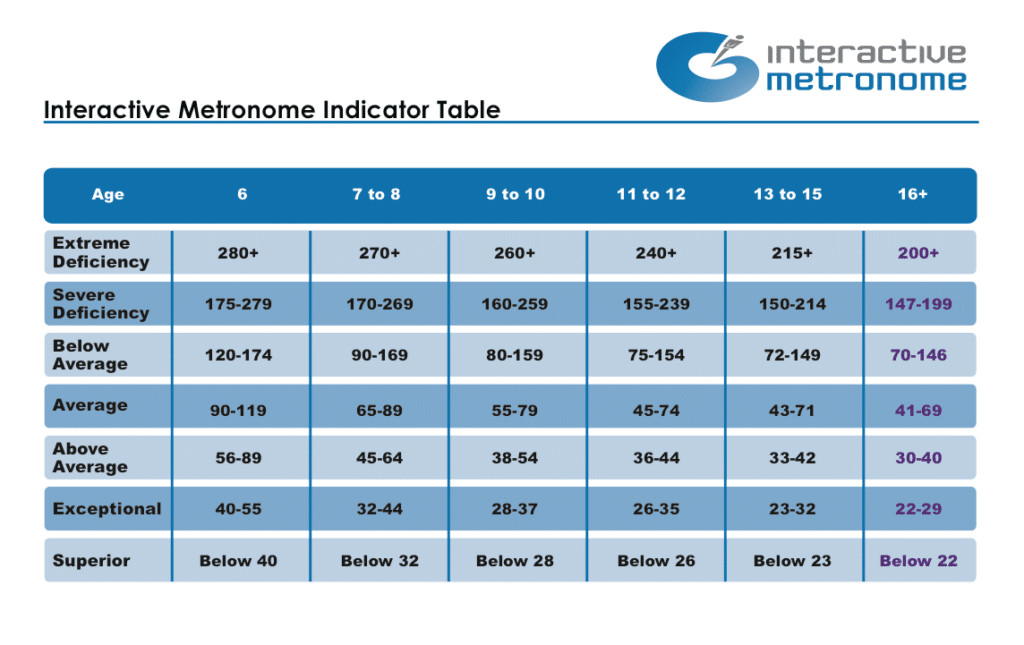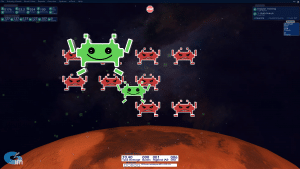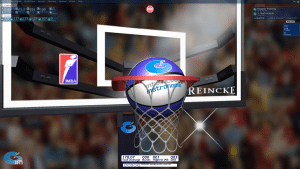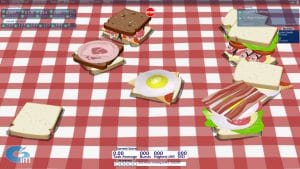By Interactive Metronome - March 29, 2023
“Are you ready?”

Ash is a 10-year 9-month-old boy with a diagnosis of Autistic Spectrum Disorder with no other medical issues, other than gluten intolerance and seasonal allergies. Ash does not take any prescribed medications and takes several supplements, such as vitamin D3, Melatonin, Magnesium, Fish Oil, and a daily Multivitamin.
When Ash started at the North Florida School of Special Education in Jacksonville, Florida, he presented as a very bright and knowledgeable child and did not struggle at all with the academic side of his school day. Typically, his daily performance sheet consisted of grades of A’s and B’s for his core classes. He was able to work independently with the level 4 in ULS (Unique Learning System) Intermediate grade curriculum. However, he also received C’s and D’s with notations for speaking out of turn (self-talking), mouthing non-edibles such as clothing or small pieces of material on the floor, being distracted, poor self-calming skills, keeping scissors and glue out of his mouth during VM tasks, maintaining personal space, and keeping his hands to himself. As Ash is a perfectionist, he did not like seeing those grades on his daily sheet at the end of the day.
Ash came to the attention of Occupational Therapy during a classroom observation and consultation with his teachers for new students. During the Beery-Buktenica Developmental Test of Visual-Motor Integration (VMI), the VMI Developmental Test of Visual Perception (VMI-VP), the VMI Developmental Test of Motor Coordination (VMI-MC), and handwriting Samples were administered with results listed below:
| VMI | VMI-VP | VMI-MC | |
| Raw Score | 21/30 | 26/30 | 18/30 |
| Standard Score | 89 | 105 | 70 |
| Scaled Score | 8 | 11 | 4 |
| Percentile | 23 | 63 | 2 |
| Age Equivalent | 8-4 | 11-5 | 6-0 |
Ash’s ability to reproduce the shapes from the design models was particularly good, with some overpenetration at the closure of designs incorporating circles. This appeared to be more of an embellishment than a lack of pencil control and was not reflected in his score. He scored a point for the first twenty-one shapes, failing only on designs that required that Ash recognize and copy discrete information, such as a certain degree of angulation or a specific number of dots. On the VMI-VP, Ash performed at above age level when matching a shape or design from a field of two through seven similar designs. This is an area of strength for Ash. For the VMI-MC, Ash was required to draw a line from dot to dot within boundary lines of a shape provided. On his first attempt, he drew the lines so rapidly that his score did not reflect his ability. He informed the examiner that “this is too easy”. Despite the normed criteria, the examiner readministered that subtest to get a true evaluation of Ash’s motor control. While Ash’s renderings were still rapid, the second score is more representative of his current ability. With models, Ash was asked to write the uppercase manuscript letters and the numbers 1 through 10 within the blocks provided as well as his first and last name within the lined boundaries. Ash employs a tripod grip with his right hand while using his left hand to stabilize the test booklet. Ash has been mastering cursive during handwriting sessions and wrote his name in cursive. He was able to construct the manuscript letters and numbers 1 through 10 legibly, but due to the speed of his renderings, they were not consistently within the blocks provided.
Additional observations were done during sessions of group Handwriting Without Tears in the classroom, outside recess period, and OT/PE sessions which occurred outside on the track and inside the shared space of the combined OT/PE room. Ash demonstrated good overall gross motor skills, ball skills, balance, and coordination. During handwriting sessions, he was able to complete the assigned tasks but required prompts to have “a quiet mouth” and required some monitoring for mouthing and maintaining personal space. He appeared to be in his “own world” – talking to himself, humming aloud, self-stimming (hands in front of face) and grabbing the hands of the students and adults, and placing them on his face. Ash’s eye contact was fair, but his teachers needed to cue him to have “eyes on me up front” frequently during instruction. His eyes would drift away although he was clearly listening. He also was observed cupping his ears with his hand as if to modulate the noise around him.
A trial of Therapeutic Listening was tried with no real benefit noted and was discontinued. At that time, it was decided to try Interactive Metronome (IM) to address these issues and increase his attention and focus on tasks immediately before him. Interactive Metronome® (IM) is an evidence-based training and assessment tool. IM challenges clients to synchronize a range of whole-body exercises to a beat. A score is provided in milliseconds. IM’s game-like features engage the client with auditory and visual guidance and provide real-time feedback while encouraging him/her to improve their scores.
The areas of concern for his parents and family were social and communication. They mentioned less babble talk, making fewer requests for repeated fill-in-the-blank statements, more communication with complete statements, more engaged conversation, more spontaneous expression of his thoughts, to interact within an unstructured instructional task, and to reduce the need for moderate prompting to use appropriate communication and physical social skills (personal space, etc.).
Ash was happy to try this “new computer game with clapping”. The sessions were scheduled twice a week in 30-minute blocks. During his initial session, we attempted the IM Long Form Assessment. The Long Form Assessment (LFA) is used to evaluate capacities in several areas including timing and rhythm, motor planning and sequencing, and attention and focus. It consists of 14 tasks that require performing a variety of upper and lower body movements in synchronization with the IM reference tone. Typically done at the beginning, middle, and end of the IM training.
While Ash demonstrated good overall motor skills and was able to initiate and perform modeled LFA tasks; he was not able to properly perform any of the patterns when the reference sound was presented and become extremely frustrated and agitated. He was unable to self-soothe and we provided sensory input before attempting just the Short Form Test. The Short Form Test (SF) is a two-minute evaluation tool consists of two tasks. It is ideally suited for briefly assessing your client at the beginning and/or end of each training session in the areas of motor, attention, and sensory processing skills.
Ash was able to put on the headphones, but pulled and tugged at the earpieces throughout his sessions. At the time, we did not have external stereo speakers available. He also scratched and pulled at his clothing.
His initial SF#1 Task Average score was 258, putting Ash in the severe deficiency range according to the IM Indicator Table. His attempt with SF#2 was no better. Short 30 second bursts of bilateral hand clapping with the Enriched Screen was attempted with similar results, with clapping being consistently early.

A decision was made to include sensory input before, during, and after the IM session. Ash sought out predominately vestibular input through balancing on a Bosu ball, standing and lying on a large vestibular rocker, rocking side to side on a small balance board, and several activities from Astronaut Training on the rotary board. He sought out very intense rotary and vestibular input during his free time choices.
During the first few weeks of IM training, Ash’s performance varied little despite employing hand over hand (which he did not like at all), trying static background training screens of the rocket ship and space, and adjusting the tempo up to 75 (which made some difference). He showed little or no regard to the computer screen. His performance was very uneven – sometimes his Task Averages would be in the 100’s or below, but as the session time went on, he would lose focus or just stop clapping, and the scores would be high again.
So we looked for other “best practices” and modifications that could be incorporated to engage Ash and achieve better outcomes. Among Ash’s obsessions are the color yellow (wears a yellow shirt and shoes every day – I mean every day!), the Paramount logo (which he can draw with accurate shading of the mountain and the correct number of stars), the globe (which he draws with continents and accurate topographical colors), and he loves everything about the planets in our solar system. He also benefitted from the sensory breaks, which seemed to reduce the frustration and stimming as well. We used yellow spots to improve visual attention during tapping tasks and incorporated both the small balance board and the larger vestibular rocker board into the tasks. We introduced a cognitive component, such as listing the planets aloud starting outward from the sun and tapping the planet’s names attached to a vertically placed Velcro boards on a wall.
However, over the next few months, his attention to task and focus on the reference tone improved, as his scores were consistently between the low 100’s down to the 70’s. His ratio of early /late remained the same and there were still occasional periods of lost focus and sensory overload. He still struggled with the headphones despite the reduction in the volume settings and when other children were in the shared space, he could become overwhelmed with the additional environmental sounds – clapping rapidly, pulling on clothes, extra body movements, or just stopping.

Prior to the school’s holiday break, Ash’s scores started to improve as did his attention to the Enriched screen on the computer. He was consistently under 100 with Task Averages more frequently between 50 and 60. On one occasion, after completing his Short Form tasks, he requested the guide sounds be left on. Since he was showing more interest in the colors, I did so as a reward. He then informed me that “I want no reds” as he watched the numbers/colors and said the names of the planets forward and backward in order as he clapped. As we approached the winter break, he was doing some self-monitoring when he received a “red” and looked to see the total of SRO “greens” at the end of each task. His Task Average scores continued to drop with 50’s being the norm and the early/late ratio was becoming more even. We mixed in upper body “cross crawls” as well as with his lower body. We increased the time of each task up to the default of 3.7 seconds and introduced the Space Invaders game. Ash really enjoyed the game and continued to improve with Task Average scores into the upper 40’s, up to 50 SRO “greens with occasional bursts, and a fairly consistent early/late ratio as we headed into the winter break.
Upon the return to school, Ash’s performance became inconsistent. With more PE classes held indoors, there was an increase in off task and sensory behaviors, making his scores erratic. He would perform some of the LF tasks quite well, then become silly and laugh inappropriately. There was an increase in the scratching, and he began to count each repetition out loud. We rescheduled his IM sessions to non-shared times and introduced the Hoops game, which he liked as well. We were able to increase the task times to 5 to 6 minutes, introduce Sammich game, and incorporate more Long-Form tasks. While the scores initially were higher, Ash was able to continue to keep to a fairly even early/late ratio. This continued until the end of the school year with Ash working on different custom patterns, such as both toes stepping up onto an elevated foot trigger and performing “pattycake” with the therapist. While he was able to bring his scores down into the 40’s, he had difficulty maintaining that score consistency and over extended periods of time.


At the start of the new school year, Ash resumed IM training and started back at the same point that we left off when school ended. While this was good news, the focus of the IM training became improving the consistency and self-monitoring of his Task Average scores and his ability to manipulate them himself. We lobbied hard for and did obtain a pair of stereo speakers, which allowed Ash to move more freely in the OT/PE room. There was a significant change in Ash’s demeanor once he no longer had to wear headphones. He would move to a piece of sensory equipment while continuing to clap, but he would return to check the computer screen for his Task Average score. If it was high, he would focus on the Enriched numbers and colors to bring down his score. Then we set a numeric goal that Ash had to reach by the end of the time limit. This seemed to be the “just right” challenge for him and he worked very hard to achieve it on every task. A noticeable improvement from IM training was the increase in his frustration tolerance. Previously, there would be a bit of a “meltdown” with self-talking and screaming if he was unsuccessful. Now, he will look at me and say “Well if you get a high score, you need to do it again”. The most significant improvement of IM training was on the last day of his training, we administered the entire Long Form assessment successfully. With exception of the Right toe exercise (Task Average: 53) and the Right hand/left toe exercise (Task Average: 57), all of the other scores were in the 30s and 40s.
He finished up with two five-minute training tasks in which he was required to score 42 or less. On the first one, his Task Average was 37. During his second task, he returned to the computer screen to find his score was above 42. He sat down in a chair and concentrated totally on the screen, bringing his Task Average score to 42 exactly. I was as proud as he was. He will be taking a break from IM to let other students participate, but I hope to get him back to get his scores down even further.
Shortly after his IM training, we readministered the same Beery-Buktenica Developmental Test of Visual-Motor Integration (VMI), VMI Developmental Test of Visual Perception (VMI-VP), VMI Developmental Test of Motor Coordination (VMI-MC), and Handwriting Samples.
| VMI | VMI-VP | VMI-MC | |
| Raw Score | 23/30 | 26/30 | 23/30 |
| Standard Score | 96 | 103 | 89 |
| Scaled Score | 9 | 11 | 8 |
| Percentile | 39 | 58 | 23 |
| Age Equivalent | 9-8 | 11-5 | 8-6 |
Ash’s ability to reproduce the shapes from the design models continues to be very good, with some overpenetration at the closure of the simpler designs. The examiner did remind him that while these particular designs were “easy” that he needed to “draw carefully”. Again, Ash scored a point for the first twenty-one design shapes but did recognize and copy discrete information, such as a certain degree of angulation or a specific number of dots, which gave him an additional two points. On the VMI-VP, Ash continues to perform at above age level when matching a shape or design from a field of two through seven similar designs. This is an area of strength for Ash. For the VMI-MC, Ash was required to draw a line from dot to dot within boundary lines of a shape provided. While some of Ash’s renderings were somewhat rapid and he was again reminded to “draw carefully”, the score showed a marked improvement. The examiner noted a significant increase in the level of Ash’s concentration during this subtest over the previous assessment. On handwriting samples, Ash continues to employ a tripod grip with his right hand while using his left hand to stabilize the test booklet. Ash is mastering cursive and independently works on his own cursive Handwriting Without Tears workbook during class handwriting sessions.
At the end of the school day, I looked at his daily grade sheet and found only A’s and B’s. His teacher reported that the grade sheet was representative of Ash’s grades overall and his attention and focus in class has improved. While he does still get a “C” occasionally, his off-task behaviors have diminished, needing only a minor prompt rather than a major intervention. As I will be sharing this report with his parents, I am sure that they will be as pleased as we are.
A week after Ash finished his IM training, he was asked by the PE teacher to lead his class in their warmup routine. Ash came to the front of his class, turned to face them, and proceeded to say “Are you ready? Let’s start with crosscrawls.” Ash counted each repetition aloud and performed two series of each of the five exercises. The PE teacher and I just looked at each other and smiled the widest smiles ever.
Barbara Charlton
North Florida School of Special Education

